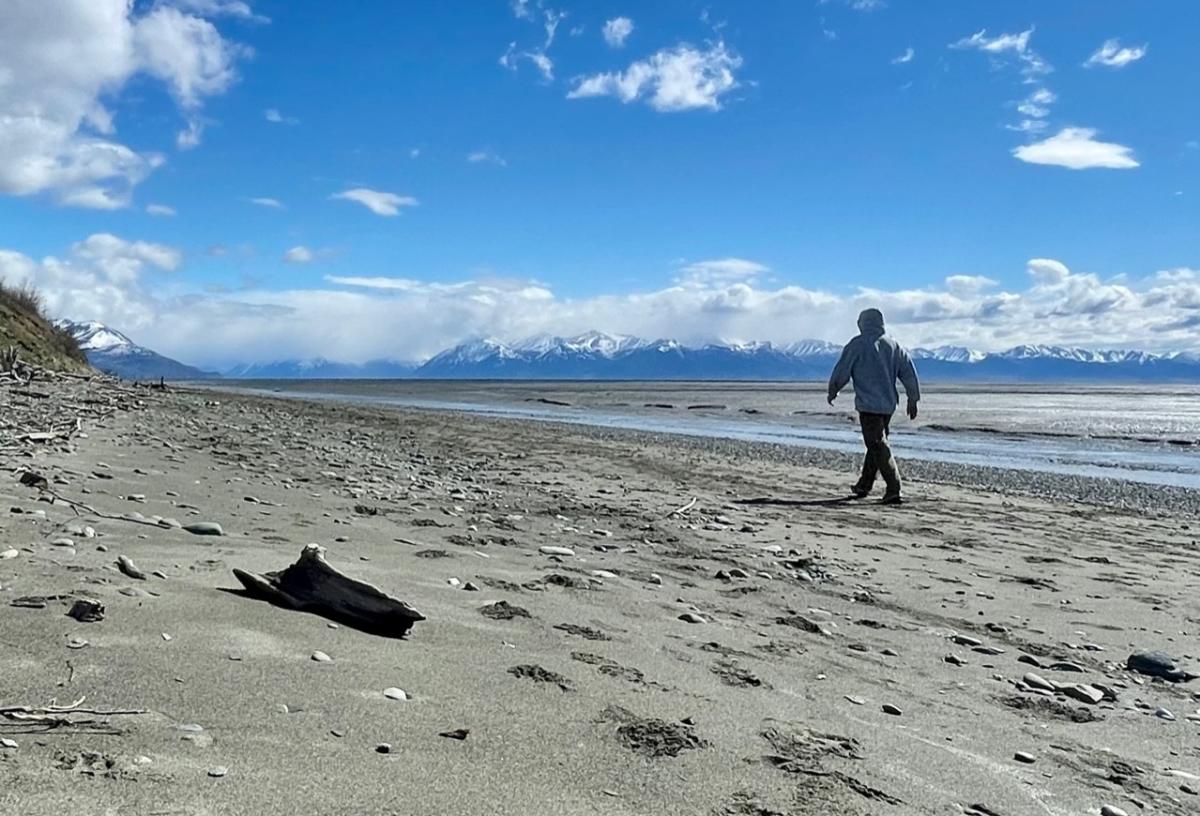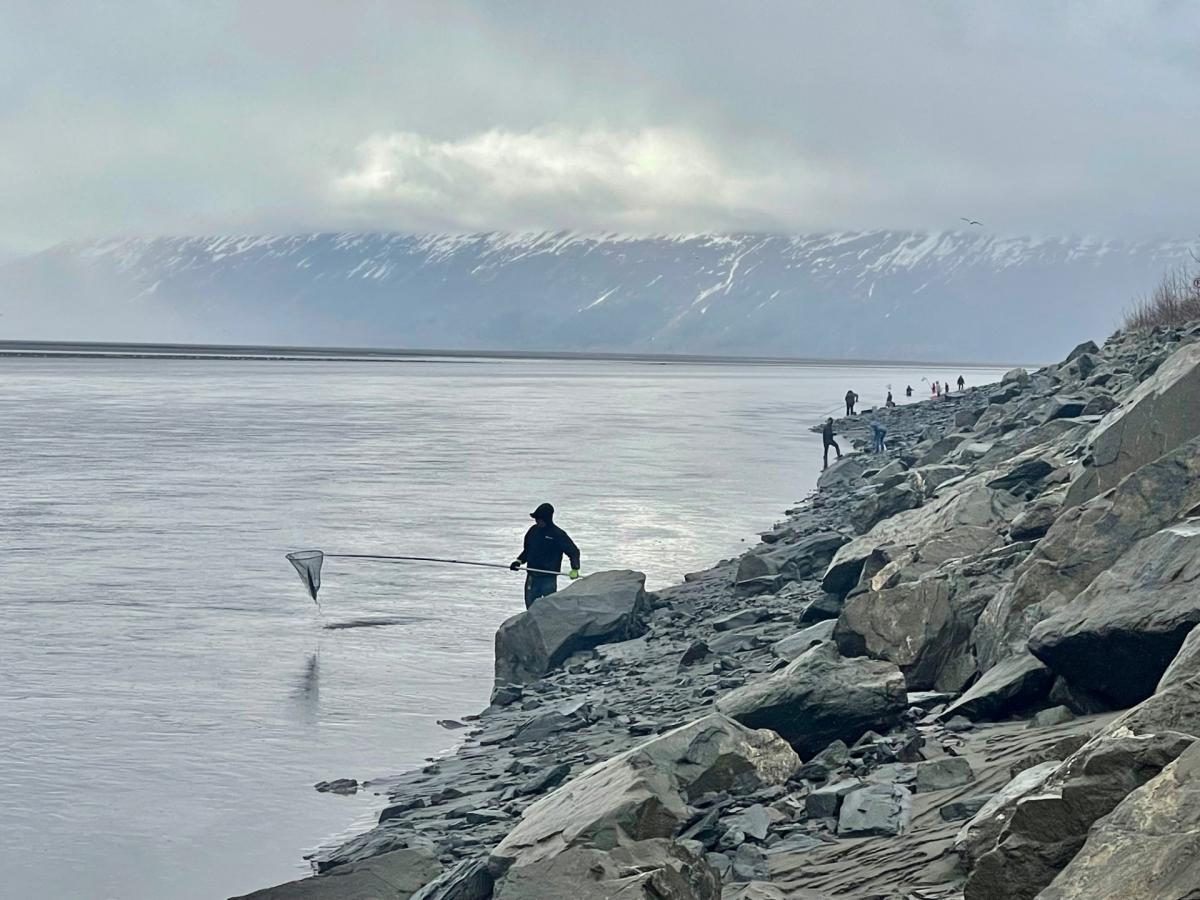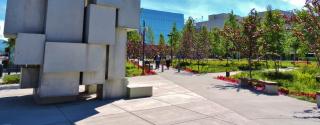As Alaska’s biggest city, Anchorage is a prime candidate for potshots from its sibling cities across the state. We’ve all heard the old “it’s only 15 minutes from Alaska” line – a subtle dig that it’s not “real” enough – from folks who argue the city’s metropolitan nature disqualifies it as authentically Alaska. I usually laugh off these little brother attacks for what they are, but there is one persistent myth that never fails to foul my fishing line.
I’ve heard it in bars in Seward, I’ve heard it on boats in Kenai, I’ve heard it from online pundits and offline pontificators. I’ve even heard it from Anchorage residents themselves: Anchorage isn’t a true coastal city.
“Anchorage has an ocean?” a journalist friend from Homer once asked me.
When I hear people say Anchorage isn’t sufficiently “coastal” for their liking it always raises my hackles. Sure it’s not San Diego, but to me the coast is essential to Anchorage’s identity – the yin to the Chugach Mountains’ yang, if you will.
But I get it, too. The vast tidal mudflats that can keep the waters of Cook Inlet at arm’s length from the city and the railroad tracks that in places cut it off from the sea can make uncovering Anchorage’s coastal alter ego a challenge. The criticisms are nothing new, and were in part what led to the creation of the 19.7-mile-long Tony Knowles Coastal Trail in the 1980s, a move by the city that created what are today many of the primary places to access both Knik and Turnagain Arm.
In an effort to silence the skeptics once and for all I decided on a recent spring day to set out on a photo tour of Anchorage. My only rule was that all of my photos had to be taken along the coast. What started out as a fun challenge turned into one of the best days I’ve had in the city in a long time and helped reignite my love for Anchorage’s silty side.
I start my day just after breakfast by heading down to the Ship Creek Small Boat Launch, which has to rank as one of Anchorage’s grittiest and least visited tourist attractions. Though it’s within walking distance of Downtown, the small boat launch is somewhat hidden down near the Port of Alaska. To get there, I took A Street down past the port entrance near Ship Creek and across the railroad tracks to a small gravel road leading to a small boatyard and jetty. Graffiti-stained and decidedly industrial, the boat launch looks more like something you’d see in one of Alaska’s burly fishing towns. The sound of sea gulls mixes with the shouts of dockworkers and machinery at the nearby port, and if you close your eyes it’s easy to imagine you’re in Dutch Harbor or Kodiak.

It’s also incredibly photogenic. There’s the city skyline, views of Mount Susitna and spots to watch birds out on the vast, shimmering gray mudflats of Ship Creek. A large anchor placed at the public viewing area serves as a symbolic talisman and a sculpture of Dena’ina elder “Grandma” Olga Nikolai Ezi pays tribute to the fact Anchorage sits on historic Dena’ina land. I get photos of Knik Arm and the monuments before I wander over to the boatyard and take a photo of a wooden fishing boat with the city skyline as a backdrop.
Next on my agenda is Downtown, so I drive the short distance and park near Mile 0.0 of the Coastal Trail. From here I wander the quiet stretch of trail leading up to Elderberry Park, a small, quiet little gem that sits right at the foot of 3rd Avenue and provides a link between Downtown and the coast. I snap a whimsical picture of a beluga whale sculpture and sneak a couple blocks off the coast and up onto Fourth Avenue to grab a hot dog and bottle of water before continuing on. Although the coast is rarely viewable from downtown proper, the ever-present sound of sea gulls and other shorebirds never lets you forget you’re never far from the water.
After lunch, I make my way south along the coast to Westchester Lagoon. It’s an easy walk from downtown and well worth the trip on a sunny day, when sometimes it seems all of Anchorage meets up at one of the busiest trail intersections in the city. At Westchester I’m hit by a wall of sound and sunshine, with the giddy squeals of children playing mixed with a cacophony of bird calls – gulls and terns and ducks and geese are seemingly everywhere. Here and there cyclists and joggers rush past, either continuing on along the coastal trail or heading toward the Chugach side of town via the popular Chester Creek Trail that runs through Midtown and into East Anchorage.

After taking some photos of kayakers out on the lagoon I wander a bit further down the trail and through a tunnel that passes beneath the railroad tracks. Suddenly I’m in another world. The din and rattle of the lagoon disappears and I find myself alone alongside the mudflats, their vast grayness interrupted only by tufts of random vegetation and the occasional Canada goose. I stand in the shade and a sense of serenity washes over me as I marvel at the fact there’s a whole chaotic city just on the other side of the tracks. I snap a quick photo of a barge out on Cook Inlet in the distance and stand there for five minutes just letting the peace and quiet rinse the stress and care from my mind.

Being a “coastal” city is more than just sea gulls. On my way to my next location I pass New Sagaya City Market and can’t help but duck into one of the city’s premier fish markets. Located just a few blocks from Westchester at the corner of 13th Avenue and I Street, the market boasts an impressive array of fresh Alaska seafood. On this visit I’m hit with the unmistakable smell of fresh fish after passing through the automatic doors, which are plastered with market prices for various sea-based delicacies. There’s salmon filets and whole halibut, red king crab, rockfish and lingcod; it’s a seafood lover’s dream and I make a mental note to come back later this summer when it’s time to make some ceviche.

Anchorage’s lack of sandy beaches is likely one of the reasons the city often gets sand kicked in its face by more traditionally beachy places, but having a day at the beach here isn’t impossible – if you know where to look. So I drive south to Kincaid Park, where I park near the main chalet building and head back toward the Coastal Trail. I’m now 10 miles from trail Mile 0.0 downtown, and the paved trail slopes steeply down toward the ocean. I walk about a mile to a branch in the trail, where a large sign directs me to a footpath through alder bushes leading to a small bluff. A quick scramble down the bluff and my shoes sink into the sandy shores of Turnagain Arm. The tide is out so there aren’t any waves breaking on the shore, but it would be impossible for anyone to argue they weren’t on a bona fide beach. I photograph driftwood and sand dunes and walk for nearly a mile as I let the brisk sea air smack me in the face. I only see one other beachcomber. Sure you might have to work for it, but if a long stroll on the beach is what you’re looking for, you don’t need to drive to Homer to find it.

I’m invigorated by the beach and decide to continue south, this time getting in my truck and taking the Seward Highway out down the legendary scenic byway running alongside Turnagain Arm. A drive of almost unbelievable beauty, I watch waterfalls and a couple cliff-dwelling sheep as I pass between the cliffs and the icy gray waters of the arm. It’s a place where you can get lucky as a photographer – beluga whales and wind surfers can often be seen among the whitecaps – and on this particular day I get about as lucky as you can. At one of the many scenic pull offs along the road I spot a white van topped with a surfboard – which could only mean one thing.
A bore tide was coming.
The tides of Cook Inlet at Turnagain Arm are among the largest in the world, and when they’re particularly big the returning water forms a tsunami-like tidal bore wave as the arm is re-filled with water. The wave has gained a cult following among surfers from Anchorage and beyond, who don bodysuits to brave the strong currents of the arm to ride the wave as it travels up the arm past Beluga and Bird Points and all the way to Girdwood. I join a large crowd of onlookers standing beneath a sky that’s been steadily filling with clouds throughout the day. It’s cold and windy and the idea of willingly diving into the water seems a bit mad to many of those making comments from the pullout. But the surfers are all about it.

I watch as the wave barrels up the inlet toward us. It’s awe-inspiring and a bit terrifying to see that much water moving at once, and we watch as a couple of the surfers and body boarders hoping to catch it find themselves rolled underwater and thrown off. But others catch the wave and ride it, skimming along the surface of the shallow water. I take a video of the wave as it passes by and shake my head in wonder at the power of the ocean.
It’s the perfect end to a photo tour that has overperformed, and I shake my head at my good fortune to have caught surfers in action. But it’s still early, so I decide I might as well continue south to the farthest reaches of the municipality to see if I can find one more shot. Suddenly the traffic slows and I begin to see pedestrians walking alongside the busy highway carrying buckets and small green nets. Hooligan!

I pull over and scramble over the guardrail and onto the slippery rocks alongside the water. Below me, handfuls of people dip their nets into the water, passing them slowly along the bottom before returning for another scoop. They’re fishing for hooligan, a small, oily, fingerlike smelt that’s prized as a subsistence food source among many Alaskans. I stand in the rain and take a photo of the fishermen with their nets raised into the air and know I’ve got my last shot. I started out in industrial Anchorage and now I’m watching subsistence fishermen harvest the bounty of the sea in a place that seems as far away from a city as you can get.
My day done, I meander into the nearby Brown Bear Saloon in the small Anchorage community of Indian and order a burger and a beer. It’s the perfect end to the perfect day. As I enjoy my dinner, a man walks in to pick up some take-out food. I turn to him and recognize his face. He’s the surfer I took a photo of a couple hours earlier. I offer to send him the picture and we share a laugh at the randomness of the encounter.
Turns out coastal Anchorage is a small world when you take time to look at the big picture.
Matt Tunseth
Matt Tunseth is a freelance writer from Anchorage, Alaska. He is one of Alaska’s more prolific newspaper writers and photographers. Although he hasn’t seen everything, he is actively working on it! He’s covered Alaska sled dog races, elections, and Little League games. He is also an avid mountain runner, an enthusiastic fact-checker, and is endlessly seeking new challenges and opportunities.


